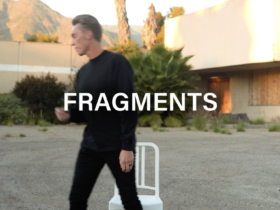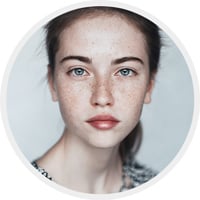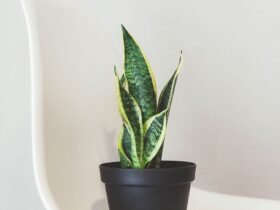If you’re headed out into the great (and buggy) outdoors, you’re probably packing some bug spray to keep mosquitoes and ticks away. But wearing bug-repellent clothing can offer an additional degree of protection against vector-borne illnesses like Lyme disease and West Nile virus, as well as plain ol’ itchy bites.
Much like UPF clothing, the best bug-repellent clothing (garments that have been treated with a pesticide) is easier to find (and more stylish) than you might think. But that doesn’t mean you should buy the first seemingly bug-proof items you see—it’s important to wear outdoor gear that’s actually going to work, which is why we’ve scoped out the best brands and retailers to shop for reliable protection.
In this article
Where to buy the best bug-repellent clothing
Whether you enjoy nature by backpacking, car camping, barbecuing, or beachcombing, you can benefit from wearing bug-protective clothes. Here, we’ve collected a wide range of options to try, including breezy wide-legged pants for backyard parties; breathable T-shirts and leggings for outdoor workouts; and gaiters, socks, and sun hats for head-to-toe coverage.
Turns out, you really can find everything on Amazon—including pieces from one of the biggest names in bug-repellent clothing, Insect Shield. It uses permethrin, a highly effective pesticide, in its fabrics to create a barrier against mosquitoes, ticks, flies, ants, chiggers, and no-see-ums. Plus the brand is registered with the Environmental Protection Agency (EPA), meaning it doesn’t pose any undue risks to people or the environment. Pro shopping tip: Other companies can use Insect Shield’s materials in their own styles, like the fishing brand Simms and the trendier Pang Wangle.
You can find top outdoor brands that rely on Insect Shield’s tech at REI, as well as ones that use similarly bug-blocking materials from No Fly Zone, another EPA-registered brand that uses permethrin-treated fabrics. ExOfficio offers a range of apparel, so your whole outfit can help protect you from bugs, while brands like Outdoor Research and Sunday Afternoons have accessories for a little added protection (anyone who’s ever had a raging mosquito bite on their ankle bone knows the difference that gaiters can make). Sea to Summit’s wearable mosquito net is a surprisingly handy piece that can fit over your head as well as most hats.
L.L. Bean uses both Insect Shield and No Fly Zone in its pieces, including a range of short- and long-sleeve shirts and quarter-zips, wool hiking socks, and a goes-with-everything baseball hats. Many of the brand’s clothes come with a UPF rating of 50+ in addition to their bug-repellent properties, meaning they block at least 98% of harmful UV rays, so they’re great to wear on sunny outings (even if bugs aren’t a major concern).
The selection of bug-repellent gear at Backcountry is on the smaller side, but you can still pick up some key pieces like a sun-protective hat from Outdoor Research and a lightweight hoodie from Simms.
Looking for more accessories that’ll give you a fighting chance against bites? Public Lands has what you’re looking for, including a versatile neck gaiter that you can wear all sorts of ways.
What you should look for in bug-repellent clothing
Clothes that are pre-treated to repel mosquitoes and ticks often contain permethrin as their active ingredient, Neeta Connally, PhD, a medical entomologist at Western Connecticut State University’s Tickborne Disease Prevention Lab, tells SELF. When bugs come into contact with the fabric, the pesticide causes them to have muscle spasms, experience paralysis, and die. (Humans are much less sensitive to its effects, though, and since we only come into indirect contact with it when it’s in or on clothes, your risk of a bad reaction is fairly low, Brendan Camp, MD, FAAD, a dermatologist at MDCS Dermatology in New York, tells SELF.) Permethrin is a registered pesticide with the EPA, and you can find out whether specific permethrin-based brands and products (like Insect Shield and No Fly Zone) are accepted by the EPA by searching this database.
Permethrin treatments on clothes will degrade the more you wash the garments, Dr. Camp says. For example, Insect Shield’s pieces will maintain their repellent qualities for 70 washes. Dr. Camp recommends checking the labels on your items to know exactly how long they’ll be effective.
How to treat any gear to repel insects, arachnids, and other critters
Permethrin is also available in spray-on formulas, like the best-selling products from Ranger Ready and Sawyer featured below. You can use these to treat your clothing, hiking boots, hat, sleeping bag, tent, and backpack, Dr. Connally says. It’s best to apply the spray outside or somewhere well-ventilated, since its fumes (especially if it’s in an aerosol can) can be irritating, and you should use enough to fully dampen (but not soak) your gear. When in doubt, just follow your product’s instructions for application. Note: Your gear will need at least a few hours to dry before you can use it.
It’s important to note that permethrin is safe to use on clothing and other fabrics, but, according to the Centers for Disease Control and Prevention (CDC), it should never be applied directly to your skin or clothes you’re currently wearing. Dr. Camp explains that directly applying permethrin to your skin can cause irritation, itching, or redness. Permethrin is safe to touch after it dries, but you can wear a base layer if you’re still concerned about irritation, he says.
In general, home-treated gear should remain effective against bugs for four to six washes, Dr. Connally says (but it’s a good idea to check your product’s label for the best estimate to follow). After that, it’ll be time to reapply so you can get back to enjoying nature (without worrying about critters crawling all over you).
Get more of SELF’s great product recommendations delivered right to your inbox (for free!).
Related:
















Leave a Reply